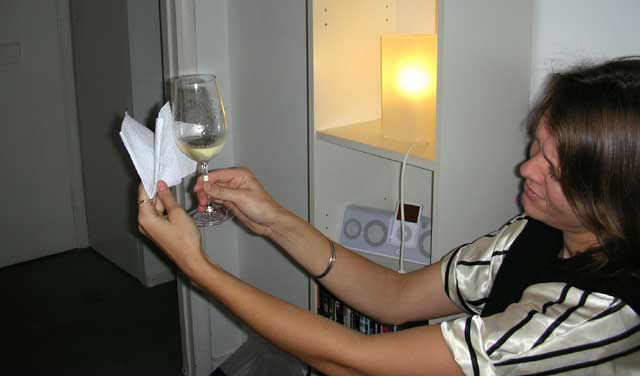Weingut Seeger, Cuvée Anna, 2006
When you have a Bordeaux style French red in your glass and it is actually German, it could very well be Thomas Seeger's Cuvée Anna. I opened a bottle Friday night for a group of friends without telling them what it was and the guesses ranged from Argentinian Cabernet to Syrah or French Malbec. In fact, Cuvée Anna is a blend of Pinot Noir, Schwarzriesling and Lemberger. Lemberger is a grape variety also know as Blaufränkisch (especially in Austria), and is know to create wines with sometimes spicy dark berry flavour, some tannins and good acidity - 'Anna' has all of the above. Schwarzriesling, literally Darkriesling, is also known as Pinot Meunier and is interestingly used in the production of Champagne (although Pinot Noir is much better known in this respect).


 People have very different ideas about wine labels, including people in wineries, of course, and that must be a good thing as it creates a certain variety. The artist-designed label of this year's GrüVe is certainly very distinctive, although I cannot say that I like the way in which it overpowers the whole bottle to the point that you see nothing else. But that just is the tradition of the Sonnhof estate's GrüVe label, an entry level Austrian Grüner Veltliner from one of Austria's premier wineries.
People have very different ideas about wine labels, including people in wineries, of course, and that must be a good thing as it creates a certain variety. The artist-designed label of this year's GrüVe is certainly very distinctive, although I cannot say that I like the way in which it overpowers the whole bottle to the point that you see nothing else. But that just is the tradition of the Sonnhof estate's GrüVe label, an entry level Austrian Grüner Veltliner from one of Austria's premier wineries.